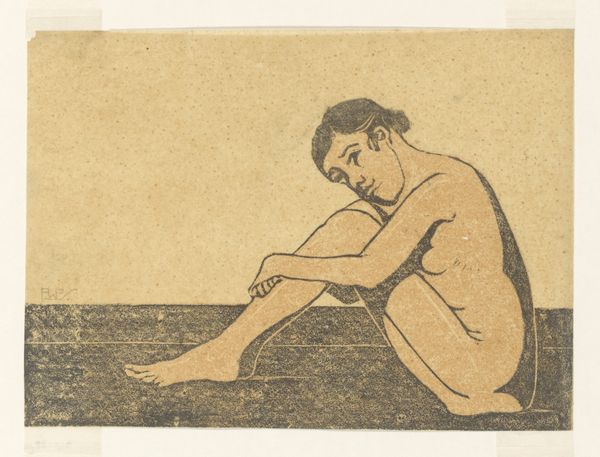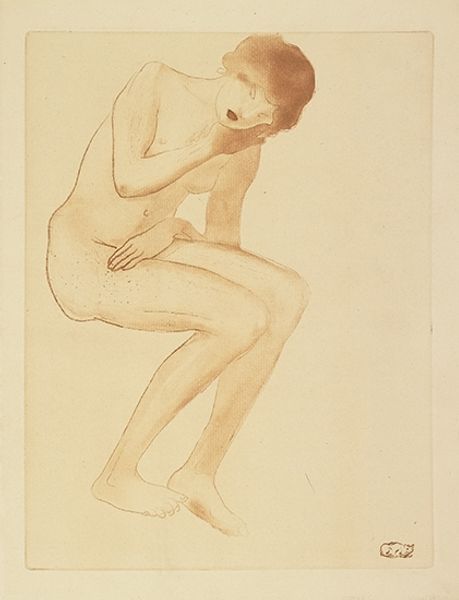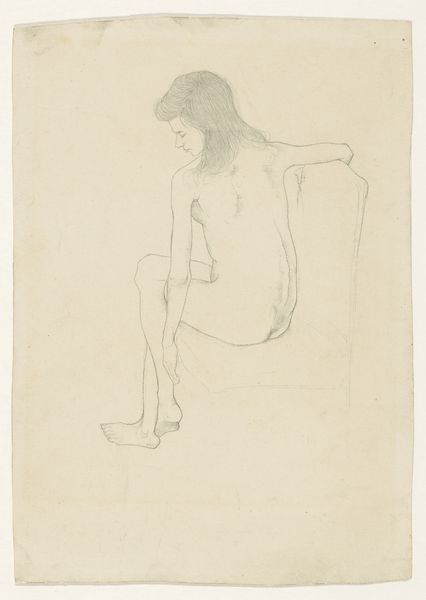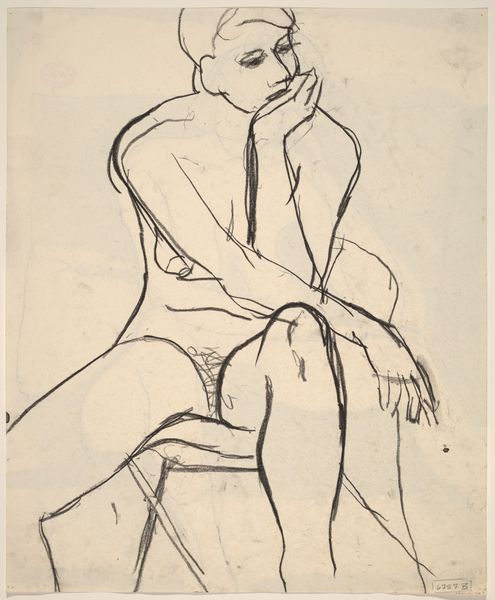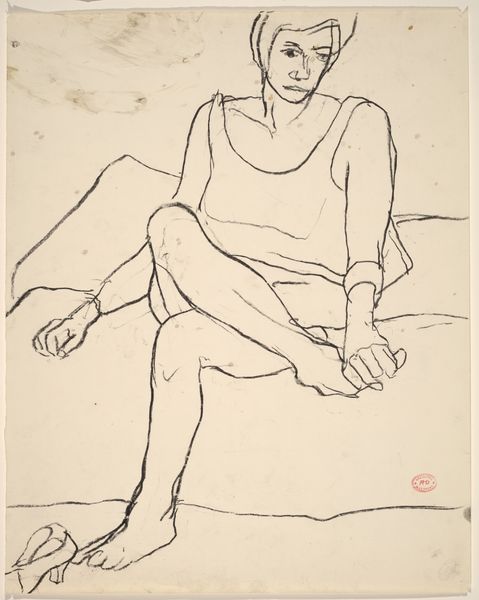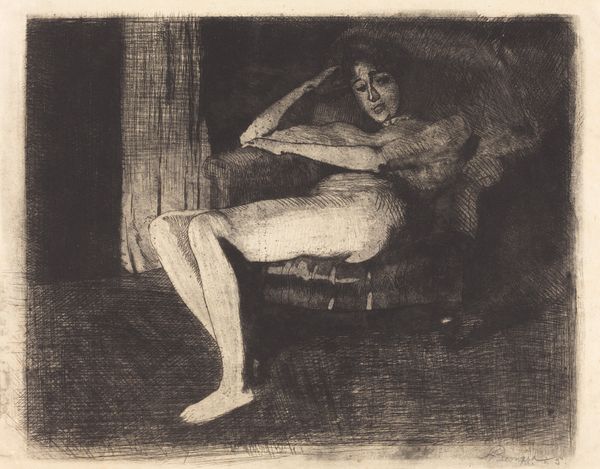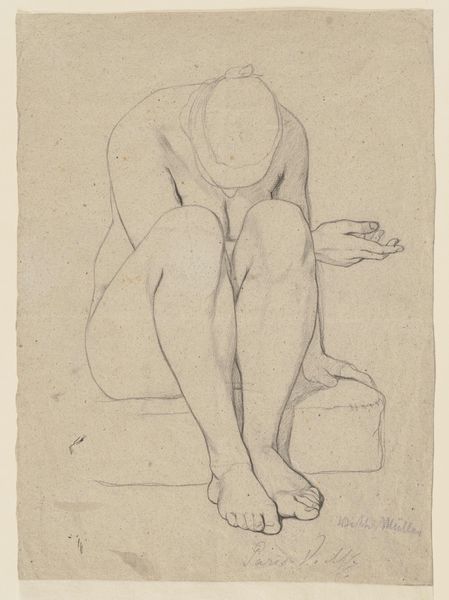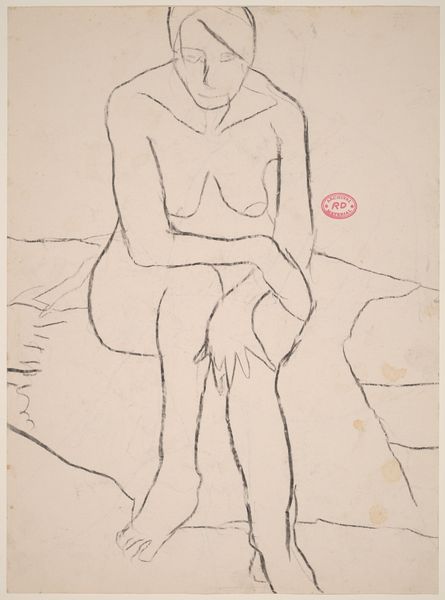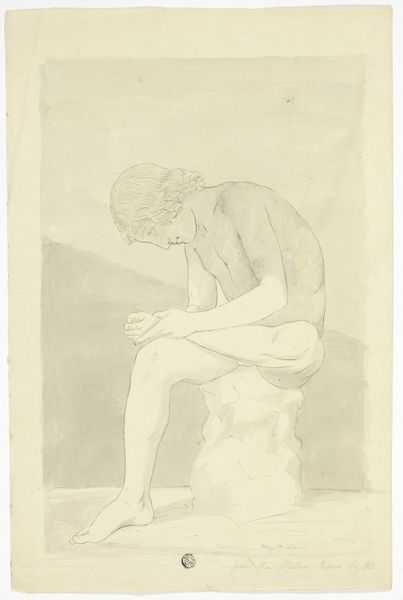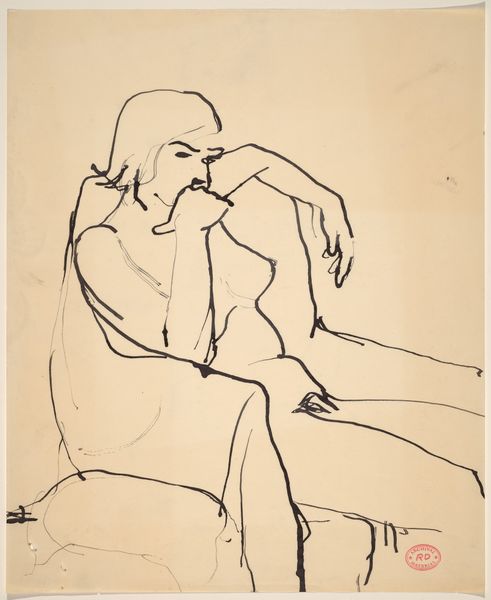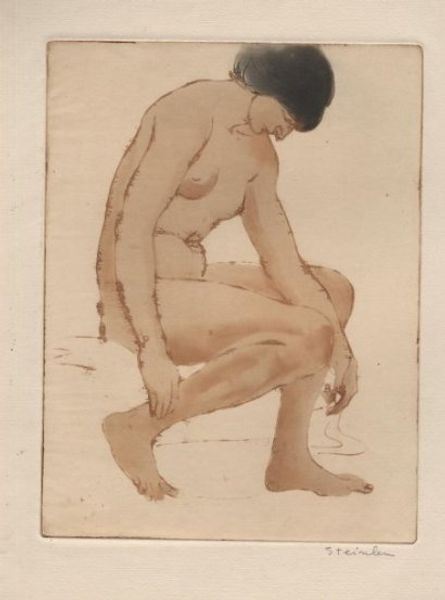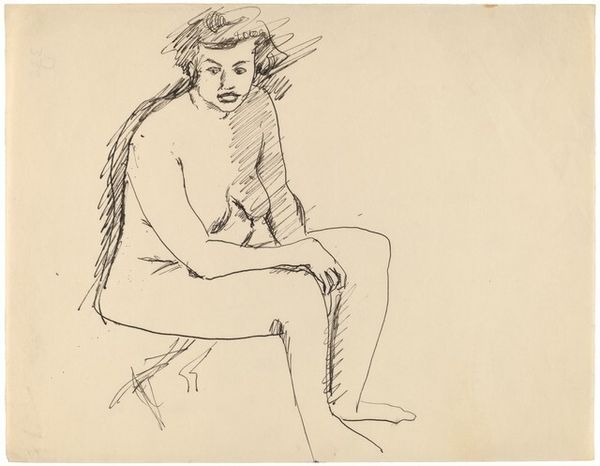
drawing, pencil
#
portrait
#
pencil drawn
#
drawing
#
pencil sketch
#
figuration
#
pencil
#
nude
Dimensions: height 246 mm, width 306 mm
Copyright: Rijks Museum: Open Domain
Curator: We’re looking at Reinier Willem Petrus de Vries’ “Naakte zittende vrouw,” created sometime between 1884 and 1952. It’s a pencil drawing, all simple lines and quietude. Editor: Hmm, it’s quite striking. The heavy, almost oppressive dark background makes the figure feel a bit trapped, don't you think? You can practically feel the weight of the pencil on the paper, that relentless graphite grinding. Curator: Perhaps. Or perhaps that somber tone just adds to the intimacy. For me, there's a softness to the sitter’s expression that transcends any feeling of being confined. She seems deeply within her own thoughts. It reminds me of a daydream caught on paper. Editor: I see your point, but it’s interesting how that contrast between the delicate subject and brutal material raises questions about labor, visibility, and even commodification of the female form. The physical effort needed to render that background speaks volumes. It’s less about individual sentimentality and more about the socio-economic relations implicit in art production. Curator: You’re always so grounded. But don’t you think the medium itself--a humble pencil--also democratizes the piece in some way? De Vries turns what could be simply a sketch into something deeply moving. There’s beauty in its very accessibility. And think of all those erased lines, ghost markings of her past iterations, the artist almost layering his doubt upon the drawing. Editor: Interesting perspective. You remind me that, even with basic tools, artists grapple with expressing complicated things. But let’s also consider how that choice might influence audience reception – pencil drawings historically circulating through particular class channels, maybe reflecting particular aesthetic economies of the period, that's something worth mentioning as we conclude. Curator: Well, for me, it all goes back to how art enables one person to express intimacy with another. Thank you, De Vries, for gifting that private exchange in public. Editor: And thank you, process and labor, for making us contemplate the conditions in which even the most fleeting feeling manifests.
Comments
No comments
Be the first to comment and join the conversation on the ultimate creative platform.

